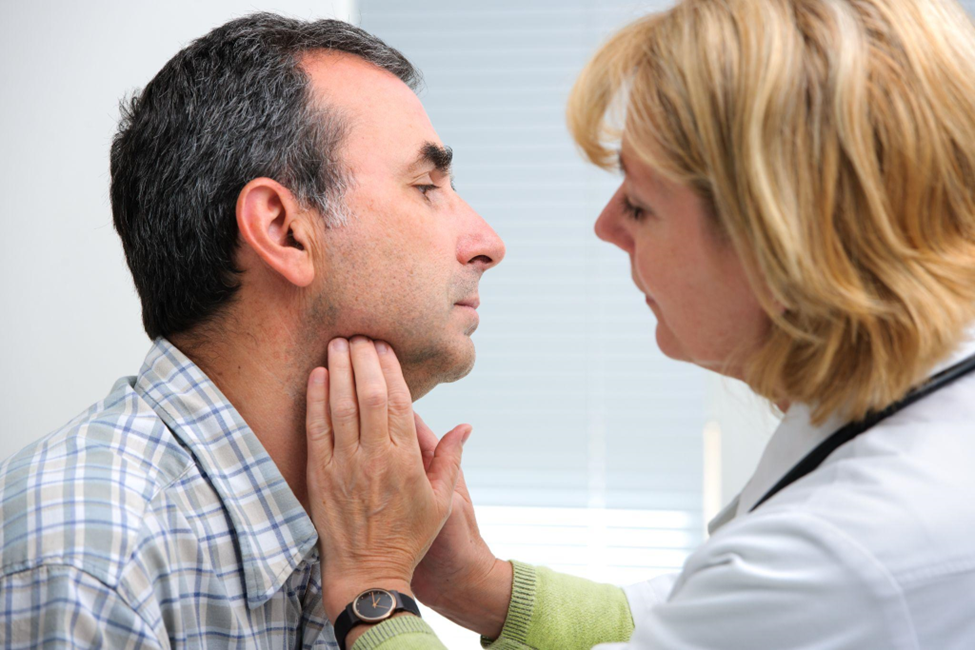
Hyperthyroidism: From Diagnosis to Management
Hyperthyroidism, commonly known as overactive thyroid, is a condition where the thyroid gland produces excess thyroid hormones, with significant impact on various bodily functions.1 This endocrine disorder can cause a range of symptoms and affects several systems within the body, leading to changes in heart rate, weight, energy levels, and more.1
Learn more about essential aspects of hyperthyroidism, from understanding its causes and symptoms to diagnosing and effectively managing the condition with the help of anendocrinologist like those at Crystal Run Healthcare. Gaining a thorough understanding of this condition is important for effective treatment and improved quality of life.
Understanding Hyperthyroidism

Hyperthyroidism occurs when the thyroid gland, located at the front of the neck, produces an excess amount of thyroid hormones.1 These hormones play a crucial role in regulating metabolism, affecting how the body uses energy.1 When too much hormone is produced, the body’s processes speed up, leading to various symptoms of hyperthyroidism.1
The most common cause of hyperthyroidism is Graves’ disease, an autoimmune disorder where the body’s immune system mistakenly attacks the thyroid gland, stimulating it to overproduce hormones.1
Other causes of hyperthyroidism include the growth of thyroid nodules that independently produce thyroid hormones, a condition known as toxic multinodular goiter.1,2 When only a single nodule is creating excess hormones, it is known as toxic adenoma.2 Thyroiditis, inflammation of the thyroid, can also temporarily cause the thyroid to leak hormones, resulting in transient hyperthyroid phases.1
Symptoms of hyperthyroidism vary widely but frequently include rapid heartbeat, unexplained weight loss, increased appetite, nervousness, anxiety, irritability, tremors, sweating, changes in menstrual patterns, increased sensitivity to heat, and more.3 In addition, Graves’ disease can lead to an uncommon but distinctive symptom known as Graves' ophthalmopathy, where the eyes may appear enlarged or bulging.3
This condition not only affects adults but also can impact children and adolescents, presenting unique challenges in these younger populations.4 In minors, hyperthyroidism is associated with symptoms such as nervousness, moodiness, fatigue, and difficulty concentrating.4 Younger children may experience a growth spurt.4
Diagnosing Hyperthyroidism
The diagnostic process normally involves a combination of a physical exam, blood tests, and imaging tests. Here’s a step-by-step overview of how healthcare professionals diagnose hyperthyroidism:
- Physical Exam - The initial step often includes a thorough physical examination where a doctor looks for physical signs of hyperthyroidism. This may involve checking the thyroid gland for enlargement, nodules, or irregularities. Other signs such as tremors, rapid heart rate, or changes in the skin and eyes may also be assessed.1
- Blood Test - A key component in diagnosing this condition is a blood test that measures levels of thyroid hormones. Generally, these tests measure:
- Thyroid-stimulating hormone (TSH) - Low levels often indicate hyperthyroidism since TSH production decreases as thyroid hormone levels increase.1
- Free thyroxine (T4) and triiodothyronine (T3) - Elevated levels of these hormones are direct markers of hyperthyroidism.1
- Imaging Tests - These can aid in identifying the underlying causes of hyperthyroidism:
- Thyroid ultrasound - This test can detect the presence of nodules or inflammation and assess the overall structure of the thyroid gland.3
- Radioactive iodine uptake (RAIU) test - This test measures how much iodine the thyroid gland absorbs from the blood, which can help determine if the patient’s symptoms are due to Graves' disease, thyroid nodules, or other conditions. A high uptake of iodine typically suggests Graves' disease.3
The combination of blood tests and imaging allows for an accurate assessment of the thyroid’s function and structure, aiding in pinpointing the specific cause of hyperthyroidism. Early and accurate hyperthyroidism diagnosis can set the stage for effective management strategies that can significantly improve the patient’s quality of life.
Treatment Options for Hyperthyroidism
Treatment strategies are tailored to the individual's condition, underlying causes, and overall health. Here are the primary hyperthyroidism treatment options, based on the causes and severity of the condition:
- Antithyroid Drugs (ATDs) - These medications are often the first line of treatment. They work by interfering with the thyroid's ability to produce hormones.1
- Methimazole (MMI) - Preferred for most patients due to fewer side effects.1
- Propylthiouracil (PTU) - Used primarily during the first trimester of pregnancy or in individuals intolerant to MMI.1
- Beta Blockers - While not affecting thyroid hormone levels directly, beta blockers help control many troubling symptoms, especially rapid heart rate, shaking, and anxiety until other treatments take effect.1
- Radioactive Iodine Therapy (RAI) - This treatment involves taking radioactive iodine orally, which destroys overactive thyroid cells. The treatment often leads to hypothyroidism, requiring ongoing thyroid hormone replacement therapy. It is particularly effective for Graves' disease and toxic nodular goiter.1,3
- Surgery (Thyroidectomy)
- Total thyroidectomy - Removal of the entire thyroid gland; commonly recommended if the patient has a large thyroid gland causing obstructive symptoms or if RAI therapy is not an option. Although generally a safe procedure, total thyroidectomy can result in damage to the parathyroid glands or the nerves that control the vocal cords.1,3
- Partial thyroidectomy - May be appropriate for less extensive thyroid disease.1,3
- Supportive Treatments
- Iodine drops - Sometimes used shortly before surgery to reduce blood flow to the thyroid and stabilize hormone levels.1,4
- Steroids - May be used in severe cases of thyroid eye disease associated with Graves' disease.5
- Selenium and monoclonal antibodies (mAbs) – Both may be used to treat thyroid eye disease.
Each treatment option has its benefits and risks, and the choice depends on individual patient factors such as age, the severity of symptoms, possible side effects, and personal preference.
Decisions regarding hyperthyroidism treatment should always be made in consultation with a healthcare provider. A personalized approach helps ensure the best possible outcomes for those living with this challenging condition.
Hyperthyroidism Care at Crystal Run Healthcare

At Crystal Run Healthcare, our dedicated team ofendocrinologists and healthcare professionals is committed to providing personalized and advanced care for patients with hyperthyroidism. We understand that each patient's journey is unique, and our approach is tailored to meet your specific needs, from diagnosis through to treatment.
Our experts are equipped with the latest technology and methods to ensure accurate diagnosis and effective treatment plans that focus on sound management of hyperthyroidism symptoms, with the aim of improving your overall health and quality of life.
If you are experiencing symptoms or have been diagnosed with hyperthyroidism, Crystal Run Healthcare is here to support you. We offer a broad range of treatment options, including the latest medication regimens, radioactive iodine therapy, and surgical solutions, all within a supportive and caring environment. Trust us to be your partner in managing your thyroid health.
Sources
- American Thyroid Association (ATA). Hyperthyroidism.Hyperthyroidism | ATA. Accessed 5/1/2024.
- American Thyroid Association (ATA). Thyroid Health Blog: Hyperthyroidism Awareness.Thyroid Health Blog: Hyperthyroidism Awareness | ATA. Accessed 5/1/2024.
- Endocrine Society. Hyperthyroidism, Updated 1/24/2022.Hyperthyroidism | Endocrine Society. Accessed 5/1/2024.
- American Thyroid Association (ATA). Hyperthyroidism in Children and Adolescents.Hyperthyroidism in Children and Adolescents | ATA. Accessed 5/1/2024.
- American Thyroid Association (ATA). 2016 American Thyroid Association Guidelines for Diagnosis and Management of Hyperthyroidism and Other Causes of Thyrotoxicosis, Updated 8/2016.2016 American Thyroid Association Guidelines for Diagnosis and Management of Hyperthyroidism and Other Causes of Thyrotoxicosis | ATA. Accessed 5/1/2024.
- https://www.ncbi.nlm.nih.gov/pmc/articles/PMC8078830/

 Optum Radiology at Crystal Run Healthcare
Optum Radiology at Crystal Run Healthcare Request medical records online
Request medical records online